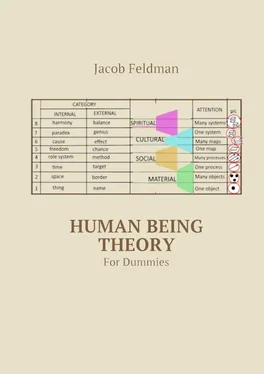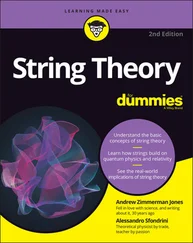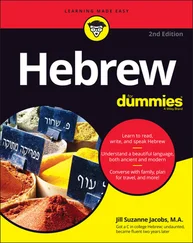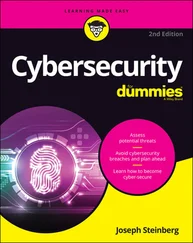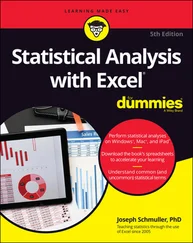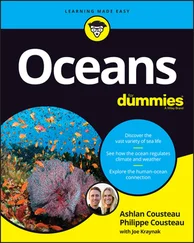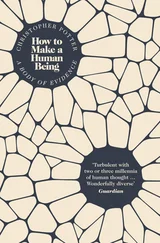How many worlds do you know?
Five, six seven!
Fun, fun, fun!
Seven, six, five, four, three, two. one!
Ten Apples Up on Top by Dr.Seuss
What do we know about mental world?
First , there is an eternal part of the mental world, like PI number. I call it mathematical reality . We do not build mathematical objects – we discover them like stars in the sky.
Second , there are pure mental objects, which we build. They live while we support them. Words of languages, heroes of legends, music and dance. I call it virtual reality .
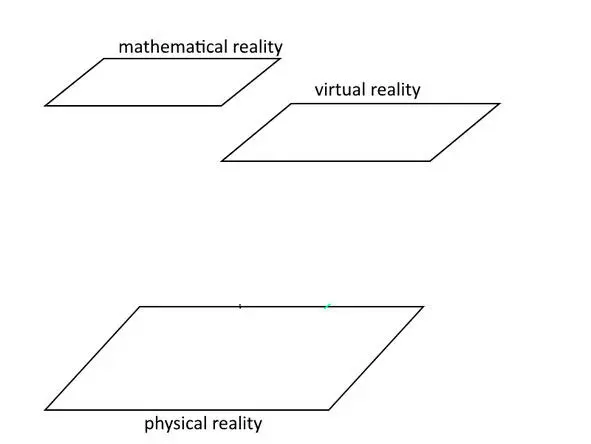
Fig.19. Thinking: Worlds
And third , there are objects of physical reality that help as to control both virtual and mathematical reality. I call them symbolic reality.
By definition, physical object is a symbolic object if it points to something else for somebody who understand the pointing and this somebody exists now (or existed in the past).
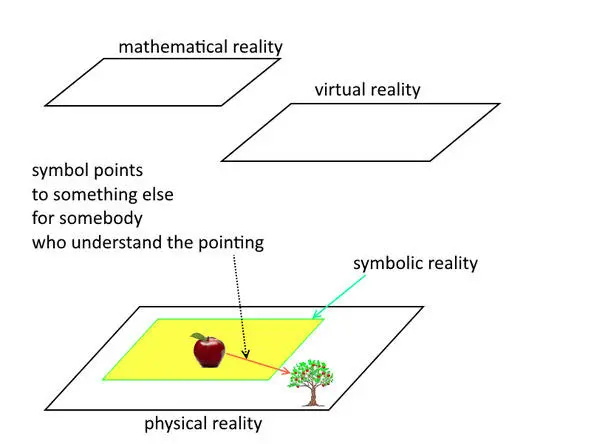
Fig.20. Symbols refer to other things
By the way, physical reality consists of events, not objects. You can put word event instead of object in the last definition.
« I beg pardon, your Majesty,» he began,
«for bringing these in; but I hadn’t quite finished my tea when I was sent for»
Alice’s Adventures in Wonderland by Lewis Carrol
When our knowledge fails, we dismissed it.
When we lose after journey toward values, we keep them.
Only complete disaster could clean our head from broken ore obsolete values. Why it is so? Because when we lose after swamp journey, no specific value is responsible for the failure. One points toward another and everyone whispers «that’s him, not me». So nobody is guilty. And we keep them all.
«I know what you’re thinking about.» said Tweedledum; «but it isn’t so, nohow»
Through the Looking Glass by Lewis Carroll
Symbolic reality is not of human beings only. Animals, insects etc. use different kinds of symbols. But for now I will ignore any non-human life.
According the definition, neurons of our brains are symbolic objects too. So first part of symbolic reality is of brains .
Things out of our brains are human-made. If one person made the symbol and other person can read the symbol, it is culture .
And some symbols are made by person but no other person can read it. No name for this part.
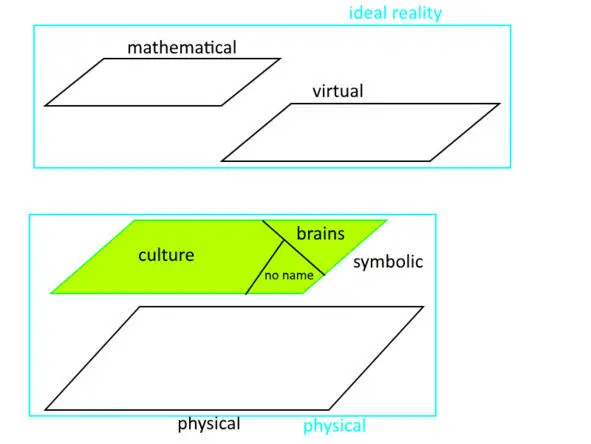
Fig.21. Ideal world vs. Physical world
Pay attention, that mathematical and virtual reality together form ideal reality . Now we have ontology done.
Tweedledum and Tweedledee
Agreed to have a battle;
For Tweedledum said Tweedledee
Had spoiled his nice new rattle
Through the Looking Glass by Lewis Carroll
There are four kinds of pointers in the symbolic reality. I place them into culture but they exist in «brains» and «no name area» too.
First kind of symbols point to the one specific event in physical reality. I call it fact .
Second kind of symbols points to the class of similar events. I call it generalization .
Third kind of symbols point to the mathematical world, to one specific element of specific model. I call it concept .
Fourth kind of symbols point to the virtual world. I call it idea . Idea in turn can point to everything including facts, generalizations, concepts, idea and other symbol.
This is our understanding of
epistemology,
ontology,
axiology.

Fig.22. Facts, generalizations, concepts, meanings
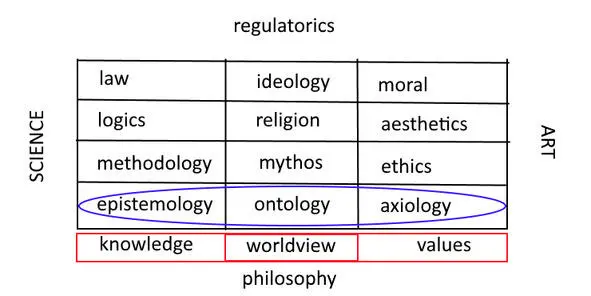
Fig.23. Inside philosophy
Just then flew down a monstrous crow,
As black as a tar-barrel
Which frightened both the heroes so,
They quite forgot their quarrel.
Through the Looking Glass by Lewis Carroll
What is the difference between myth, religion and science? To answer this question I collected evidences.
1) Is there canonical texts?
2) Are there professionals?
3) What about authorship?
See answers in the table.

Fig.24. Canon, professionals, authorship
I suppose that these different features are outer manifestation of specific inner activity.
I suppose that the most valuable information in society circulates inside special hierarchies . There are three kinds of positions in such hierarchies: authors, translators, and consumers.

Fig.25. Authors, translators, and consumers
There are no professionals in the myth circulating.
There are no authors in religion (that’s why they need God as a Creator),
but there are authors in science.
It means that myth and religion (for some reason) do not use some parts of the hierarchy.
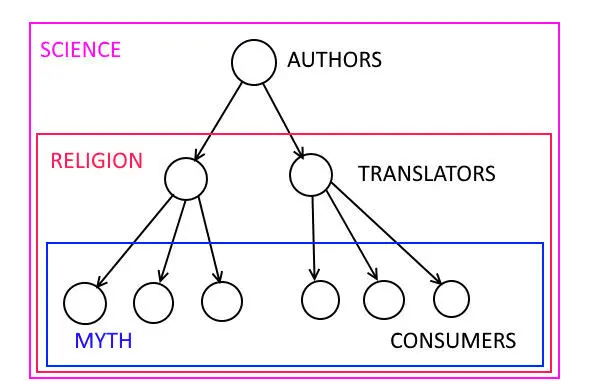
Fig.26. Myth, religion, science
Disclaimer. Pair «knowledge vs. faith» makes us to distinguish between consumers of science and consumers of religion. And this is bad idea.
Do not compare consumers of different kinds. They are very similar. Compare science, religion and myth as a systems.

Fig.27. Inside philosophy
3.Main model: levels of mind
Every model is a Heaven’s gift
«If it moves, salute it.
If it doesn’t move, pick it up.
If you can’t pick it up, paint it.»
US Military saying
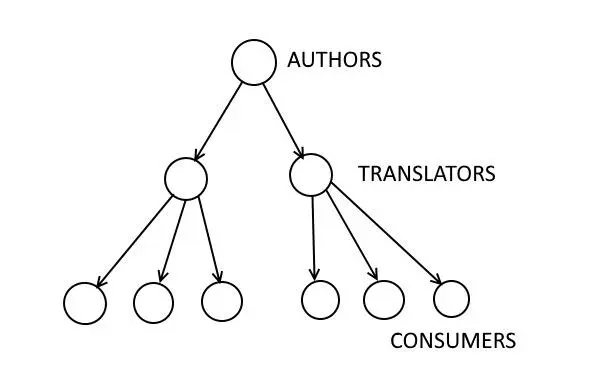
Fig.28. Authors, translators, and consumers
Читать дальше
